Filter by
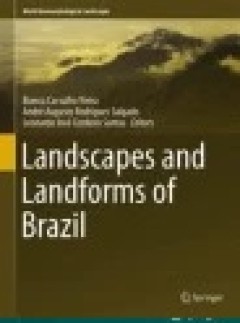
Landscapes and Landforms of Brazil
This book presents Brazil as a country of continental dimensions. Its territory has a large variety of rock types, geological structures and climates. The country has a large variety of landscapes, such as the humid plains of the Amazon River, the dry plateaus of the semi-arid region or the subtropical mountains of the southern region. On the coast, some plateaus and mountains, like the Serra d…
- Edition
- -
- ISBN/ISSN
- 978-94-017-8023-0
- Collation
- -
- Series Title
- -
- Call Number
- -

Methods for Measuring Greenhouse Gas Balances and Evaluating Mitigation Optio…
This book provides standards and guidelines for quantifying greenhouse gas emissions and removals in smallholder agricultural systems and comparing options for climate change mitigation based on emission reductions and livelihood trade-offs. Globally, agriculture is directly responsible for about 11% of annual greenhouse gas (GHG) emissions and induces an additional 17% through land use change,…
- Edition
- 1
- ISBN/ISSN
- 978-3-319-29792-7
- Collation
- XV, 203
- Series Title
- -
- Call Number
- -
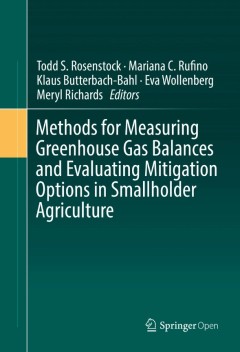
Methods for Measuring Greenhouse Gas Balances and Evaluating Mitigation Optio…
This book provides standards and guidelines for quantifying greenhouse gas emissions and removals in smallholder agricultural systems and comparing options for climate change mitigation based on emission reductions and livelihood trade-offs. Globally, agriculture is directly responsible for about 11% of annual greenhouse gas (GHG) emissions and induces an additional 17% through land use change,…
- Edition
- 1
- ISBN/ISSN
- 978-3-319-29792-7
- Collation
- XV, 203
- Series Title
- -
- Call Number
- -

Sustainable Intensification to Advance Food Security and Enhance Climate Resi…
This 32-chapter volume represents the core of several oral and poster presentations made at the conference. In addition to Introduction and Conclusion sections, the book is thematically divided into 7 sections, namely, 1) Land Use and Farming Systems, 2) Effects of Climate Change on Crop Yield, 3) Soil Nutrient and Water Management for Carbon Sequestration, 4) Rehabilitation of Degraded Lands …
- Edition
- -
- ISBN/ISSN
- 978-3-319-09360-4
- Collation
- XXII, 665
- Series Title
- -
- Call Number
- -
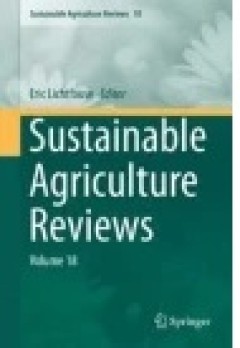
Sustainable Agriculture Reviews
This book features review articles that analyze current agricultural issues and knowledge. It also proposes novel, environmentally friendly solutions that are based on integrated information from such fields as agroecology, soil science, molecular biology, chemistry, toxicology, economics and the social sciences. Coverage examines ways to produce food and energy in a sustainable way for huma…
- Edition
- Volume 18
- ISBN/ISSN
- 978-3-319-21629-4
- Collation
- VI, 319
- Series Title
- Sustainable Agriculture Reviews
- Call Number
- -
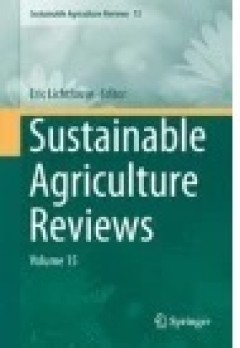
Sustainable Agriculture Reviews
Sustainable agriculture is a rapidly growing field aiming at producing food and energy in a sustainable way for humans and their children. Sustainable agriculture is a discipline that addresses current issues such as climate change, increasing food and fuel prices, poor-nation starvation, rich-nation obesity, water pollution, soil erosion, fertility loss, pest control and biodiversity depletion…
- Edition
- Volume 17
- ISBN/ISSN
- 978-3-319-16742-8
- Collation
- VI, 366
- Series Title
- Sustainable Agriculture Reviews
- Call Number
- -
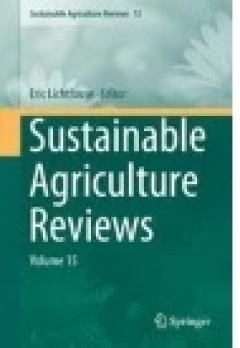
Sustainable Agriculture Reviews
Sustainable agriculture is a rapidly growing field aiming at producing food and energy in a sustainable way for humans and their children. It is a discipline that addresses current issues: climate change, increasing food and fuel prices, poor-nation starvation, rich-nation obesity, water pollution, soil erosion, fertility loss, pest control and biodiversity depletion. This series gathers review…
- Edition
- -
- ISBN/ISSN
- 978-3-319-09132-7
- Collation
- IX, 407
- Series Title
- Sustainable Agriculture Reviews
- Call Number
- -

Nematode Pathogenesis of Insects and Other Pests:Ecology and Applied Technolo…
Achieving a sustainable agriculture requires integrating advances in multiples disciplines, covering both fundamental and applied research in a common objective: enhancing crop health for better productions. This first volume of the Series “Sustainability in plant and crop protection” presents a comprehensive and multi-disciplinary compendium about the recent achievements in the use of ento…
- Edition
- 1
- ISBN/ISSN
- 978-3-319-18266-7
- Collation
- XVII, 531
- Series Title
- Sustainability in Plant and Crop Protection
- Call Number
- -
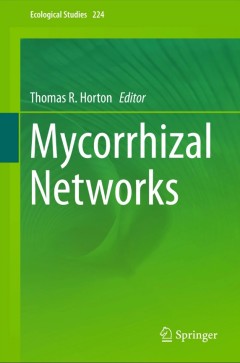
Mycorrhizal Networks
The last 25 years have seen significant advances in our understanding of the mycorrhizal fungi that colonize most of the world’s plants, and the mycorrhizal networks that form and extend into the soil beyond plant roots. In addition to a thorough review of recent research on mycorrhizal networks, this book provides readers with alternative perspectives. The book is organized into three sectio…
- Edition
- 1
- ISBN/ISSN
- 978-94-017-7394-2
- Collation
- XVIII, 286
- Series Title
- Ecological Studies
- Call Number
- -
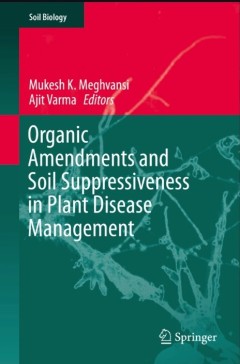
Organic Amendments and Soil Suppressiveness in Plant Disease Management
This book provides a timely review of concepts in plant disease management involving microbial soil suppressiveness and organic amendments. Topics discussed include the impact of suppressive soils on plant pathogens and agricultural productivity, the enhancement of soil suppressiveness through the application of compost and the development of disease suppressive soils through agronomic manag…
- Edition
- -
- ISBN/ISSN
- 978-3-319-23075-7
- Collation
- -
- Series Title
- -
- Call Number
- 631.4 ORG
 Computer Science, Information & General Works
Computer Science, Information & General Works  Philosophy & Psychology
Philosophy & Psychology  Religion
Religion  Social Sciences
Social Sciences  Language
Language  Pure Science
Pure Science  Applied Sciences
Applied Sciences  Art & Recreation
Art & Recreation  Literature
Literature  History & Geography
History & Geography